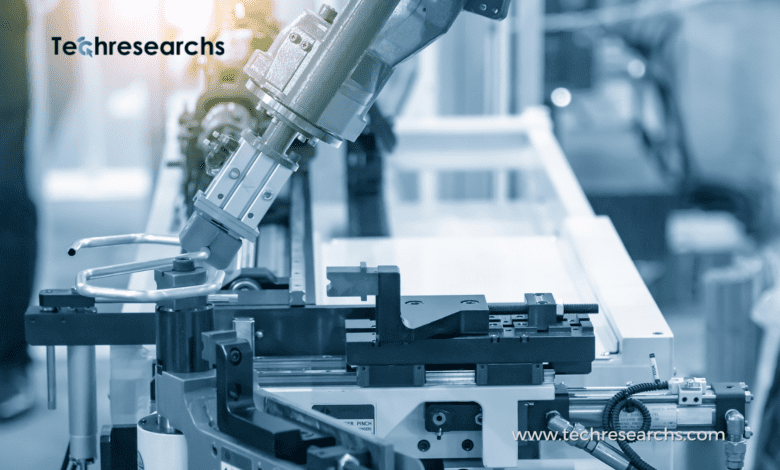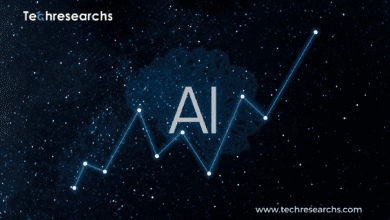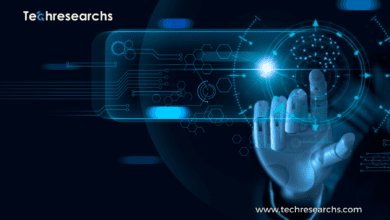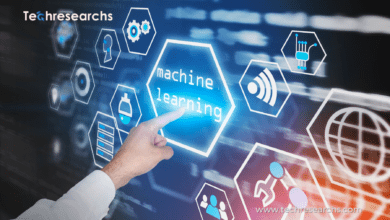Robotic Process Automation Versus Hyper-Automation (Rpa)


Robotic process automation (RPA) uses programmed robots to automate repetitive corporate tasks, mimicking human behavior.
Much of the commercial sector has been completely overtaken by automation. It depicts the continuum of the digital transformation journey transition from process-focus to data-focus for a good cause.
In order to transition from routine, rule-based labor to tasks requiring higher-value insight, human workers also require assistance. Automation is now necessary as a result.
However, the majority of employees still do not fully understand RPA and how it differs from hyperautomation.
Let’s compare RPA and hyper-automation in this blog article to find out.
How does hyper-automation work?
Hyperautomation automates business operations that are typically carried out by humans using technologies like artificial intelligence, machine learning, and RPA.
Several instances of hyper-automation
OCR-based document comprehension (Optical Character Recognition)
interpreting emails using NLP (Natural Language Processing)
Automate restocking and stock forecasting
Enhance automation procedures by using AI/ML (Artificial Intelligence/Machine Learning).’
What is RPA, or robotic process automation?
Robotic process automation (RPA) refers to the use of robots that have been programmed to automate normal, repetitive, and predictable corporate operations utilizing interactions that are intended to imitate human behavior.
Robotic Process Automation Bots Come In Two Different Forms:
RPA bots with assistance The worker interacts only minimally with the desktop PC where this bot is installed, and the bot does the more laborious and repetitive tasks.
Unassisted RPA bots: These handless, scheduled bots are used for specific workflows.
Robotic process automation (RPA) can group questions and route them to the appropriate divisions, such as billing, technical sales, etc.
Another excellent example, even at the nexus of RPA and AI, is chatbots.
Below are a few additional real-world RPA use cases:
- Example 1: Finance
- The primary financial areas that need automation are:
- Contract to Pay
- a reportable record
- Estimate to cash
- Estimate to cash
Case 2: Personnel Resources
The main human resource areas that need automation are as follows:
integrating employee data from several HR computer systems.
tracking and accurately updating personnel records
simplifying the onboarding of new employees
Use case 3: RPA for Payrolls can assist with tasks like these:
Validations for Time Entry
Attendance Control Handling Resignation Control
Payroll Deductions Payroll Records Changes
Use case 4: Retail (Inventory Management)
RPA can handle these problems by automating a number of processes:
evaluating sales data globally and internationally
maximizing working capital while maintaining inventory levels that fulfill the demand
automating low inventory alerts (or even automated ordering)
reducing inventory errors—over 60% of the time, inventory records are erroneous.
What distinguishes RPA from hyperautomation?
While Robotic Process Automation generally focuses on automating rule-based operations, hyper-automation is a more extensive alteration of how a business operates and raises Robotic Process Automation to a higher degree.
Hyperautomation is the use of additional technology, such as machine learning, to low-level operations to use data to identify patterns, learn, and add another layer of complexity while adhering to straightforward rule-based processes.
Robotic process automation advantages:
Let’s quickly review the advantages of RPAs:
Trustworthy Consistency
What if some of the most important workflows in your company no longer involved human error? Accounts payable mistakes that result in unexpected charges for a business are expected.
Due to a transposed digit in a PO number, your company may see double payments for invoices that your employees misrepeated.
When you automate, you can achieve a data accuracy level of 100% without any errors
Strengthen Data Security for Business
Business leaders’ main worry about RPA tools is how they would affect operational risk.
Security flaws, data breaches, and leaks are all too common, and management may be concerned about the security of such systems.
However, the risk of platform leakage is comparatively lower when your team thoroughly sets RPA criteria and controls them critically.
Software security can be substantially increased by selecting a well-built and maintained solution.
Governance, Rules, and Compliance
It will be crucial for other firms to take a more developed approach to automation governance as RPA solutions are developed and used in the workplace.
This is due to several risk issues associated with RPA that may have an effect on how businesses operate.
Furthermore, a lack of power and control over the use of more common tools for shared services throughout the firm might result in security lapses and data leaks.
Hyper-automation’s advantages
Let’s quickly review the advantages of hyper-automation:
Automation and Digital Transformation:
Automation is typically the initial step for firms toward implementing a full digital transformation strategy that streamlines, optimizes, and greatly boosts efficiency.
A continuation of that change that elevates everything to a new level is hyper-automation.
cost savings:
By eliminating wasteful spending in business operations and relieving employees of activities that can be completed without human involvement, automating business processes can significantly cut expenses.
By turning automation into the manual for all company activities, hyperautomation goes a step further.
This indicates that it automates any operation that can be automated and significantly lowers expenses across many different areas of a firm.
Increase Data Use:
Utilizing hyper-automation helps you to make use of the business data you already have and collect new data.
You can use your data more accurately and error-free thanks to hyper-automation, which combines automation, AI, and machine learning.
It suggests that using more data—including data you haven’t utilized before—and even letting AI use that data will give you more insights.
Learn more about Hyper-Automation vs. Automation: Informed Business Decisions
Future Plans:
Hyper-automation is the next stage of automation if RPA is already being used in your company. It’s crucial to determine whether a hyper-automation platform can accommodate all the elements you need to drive total automation.
RPA is moved from the back office into a customer-facing setting through hyper-automation. It is not necessary to point out how the COVID-19 pandemic has increased demand for a digital society.
IA automation solutions are now more necessary than ever thanks to the adoption of digital transformation.



